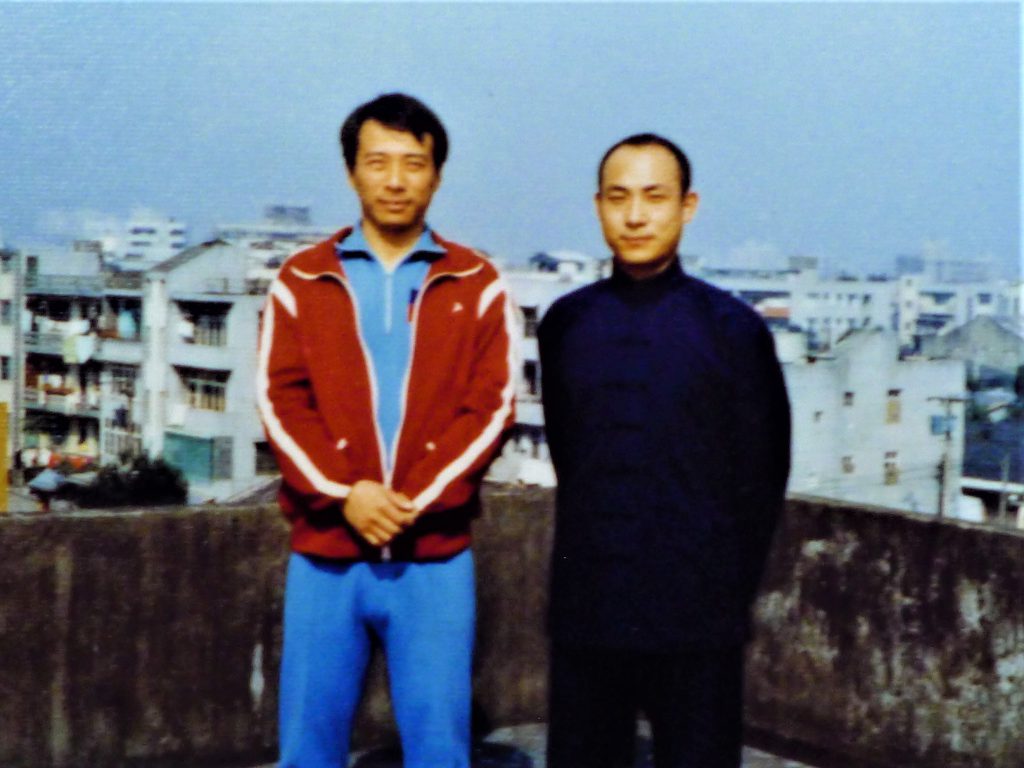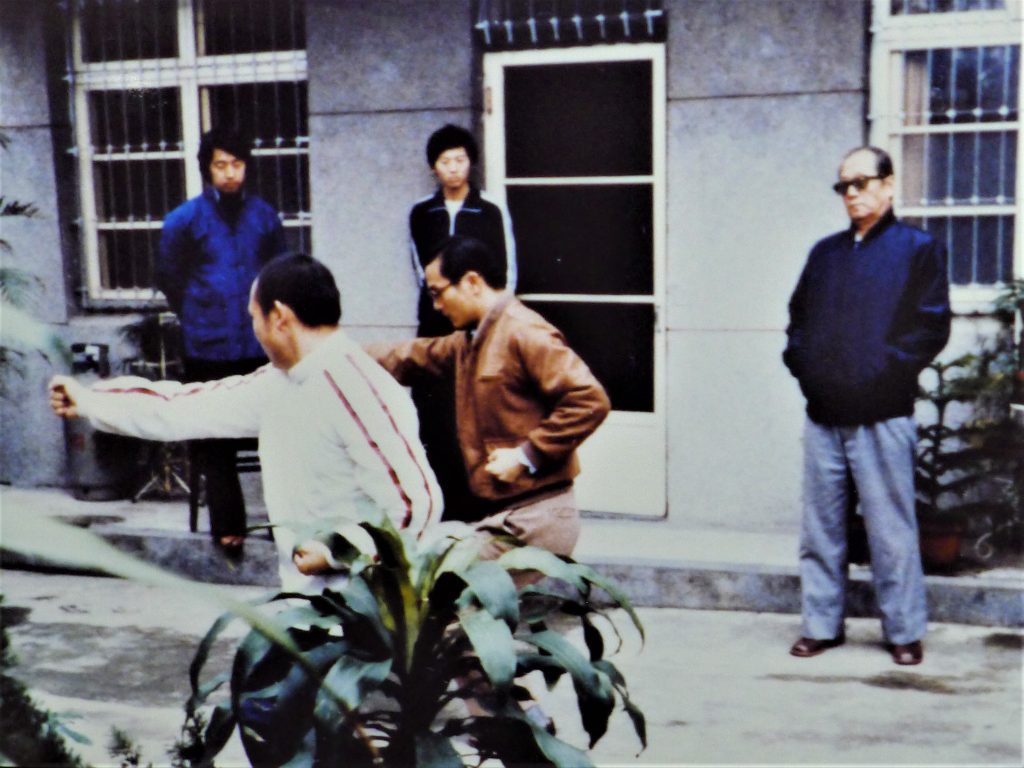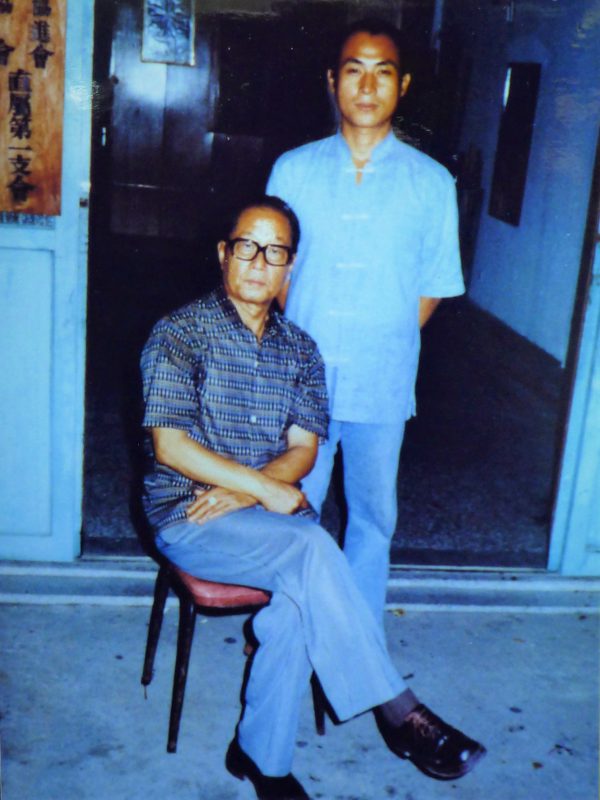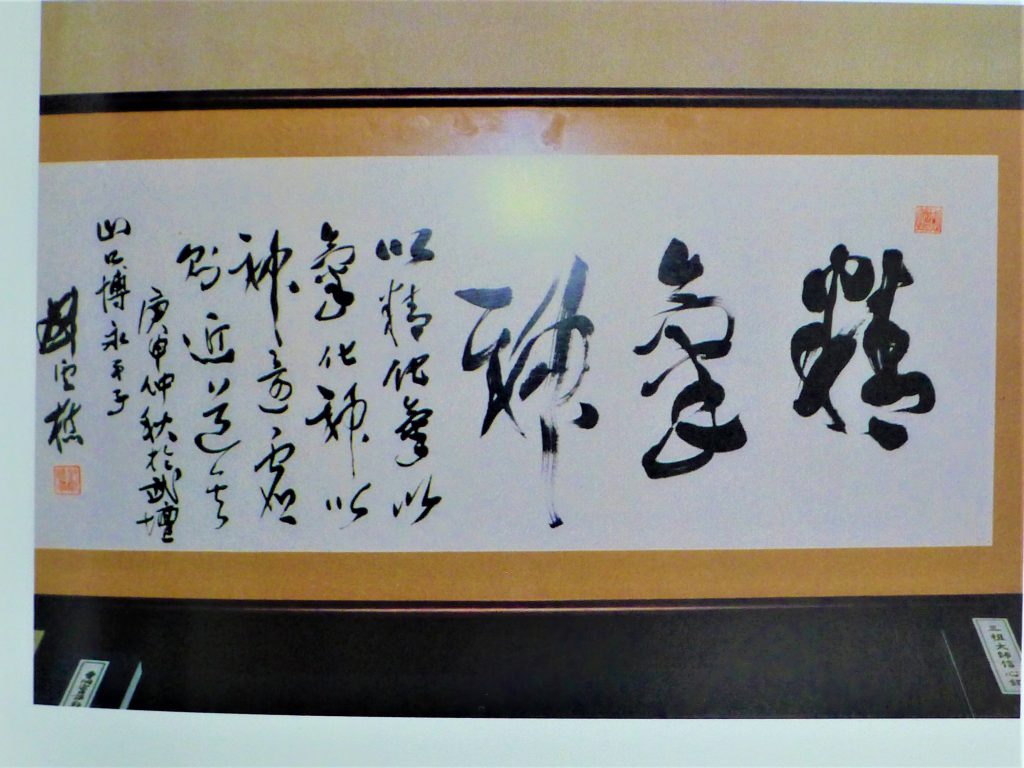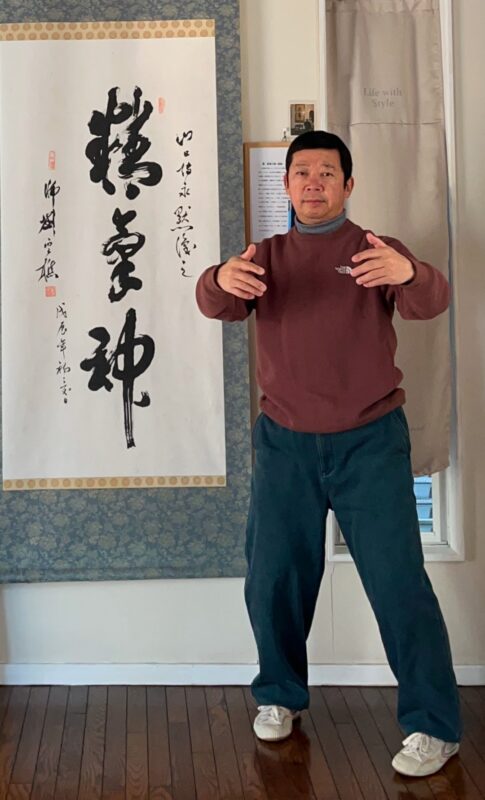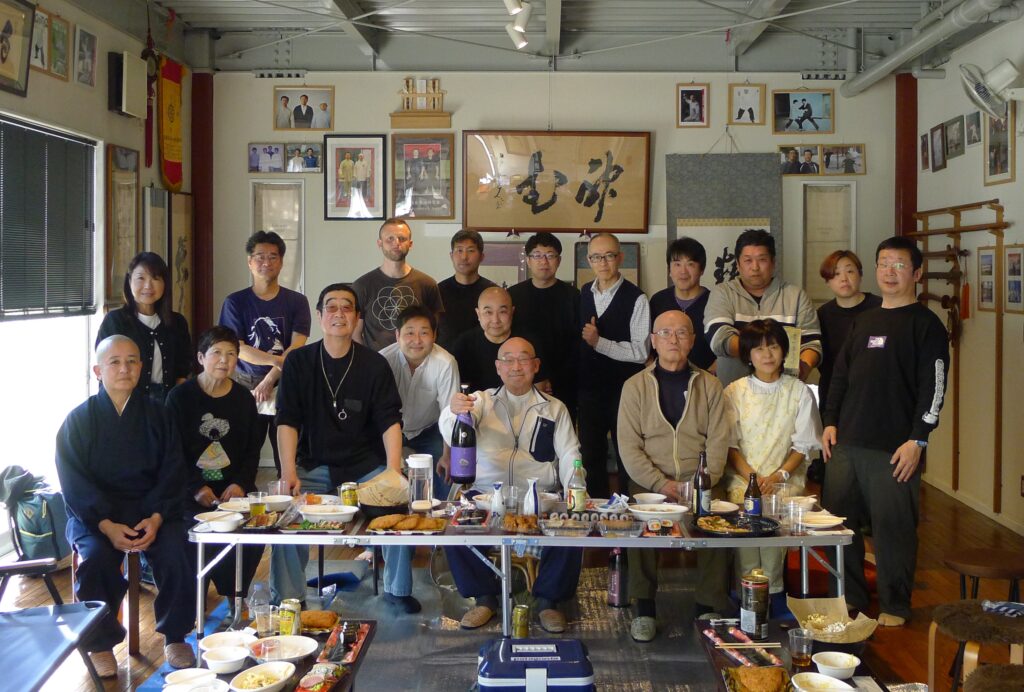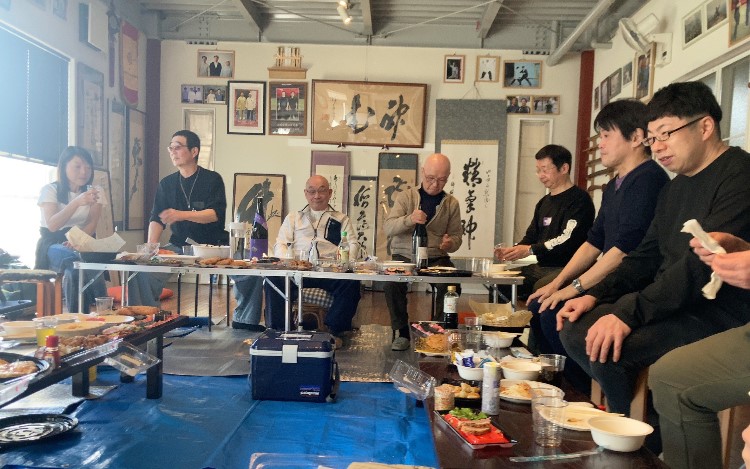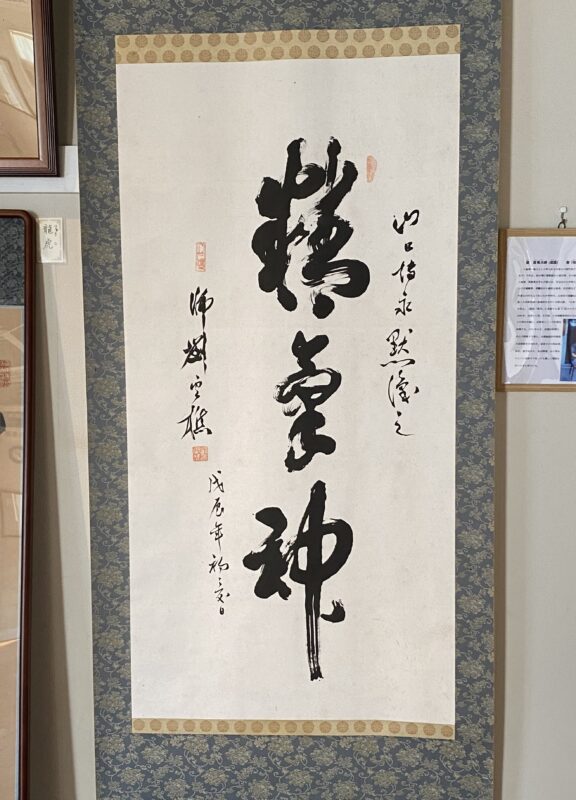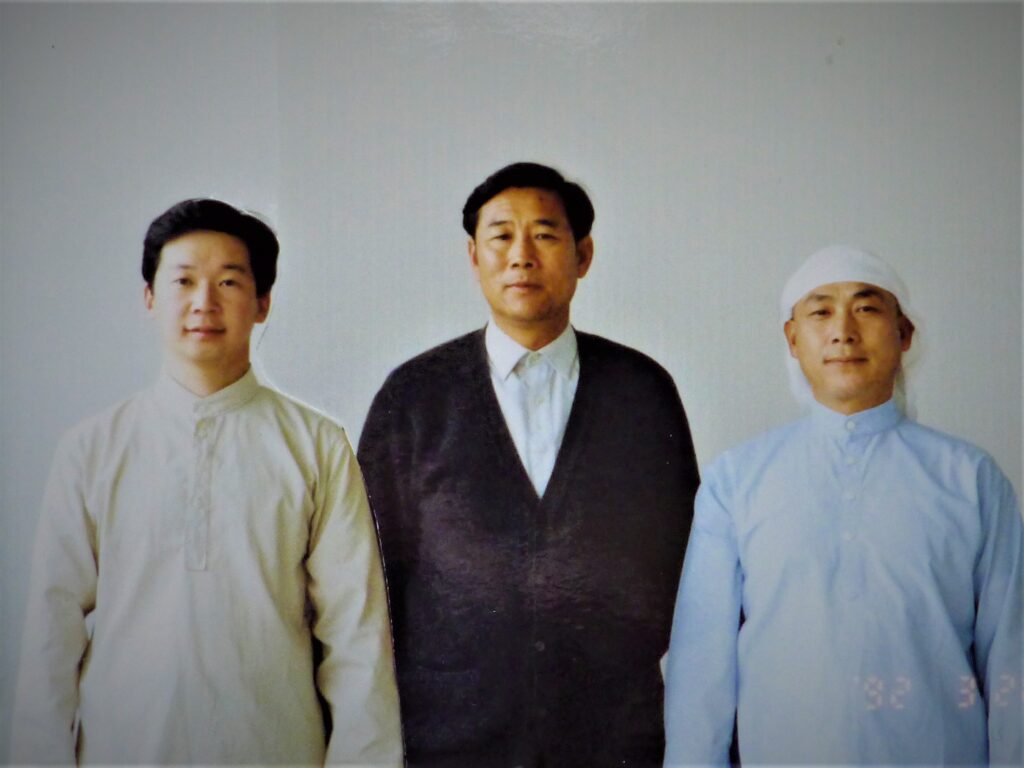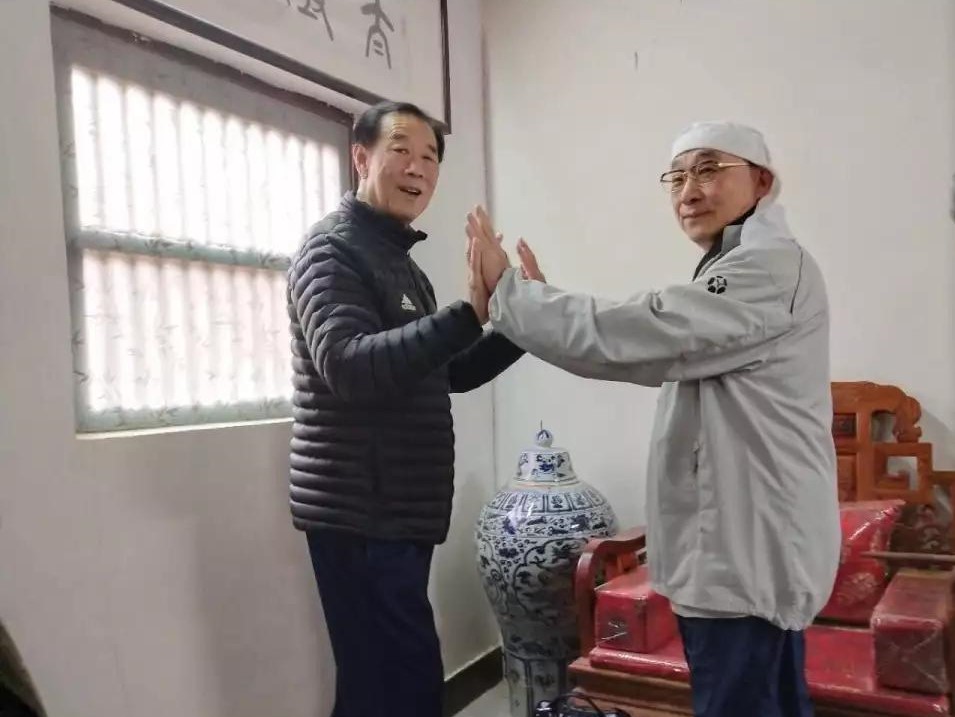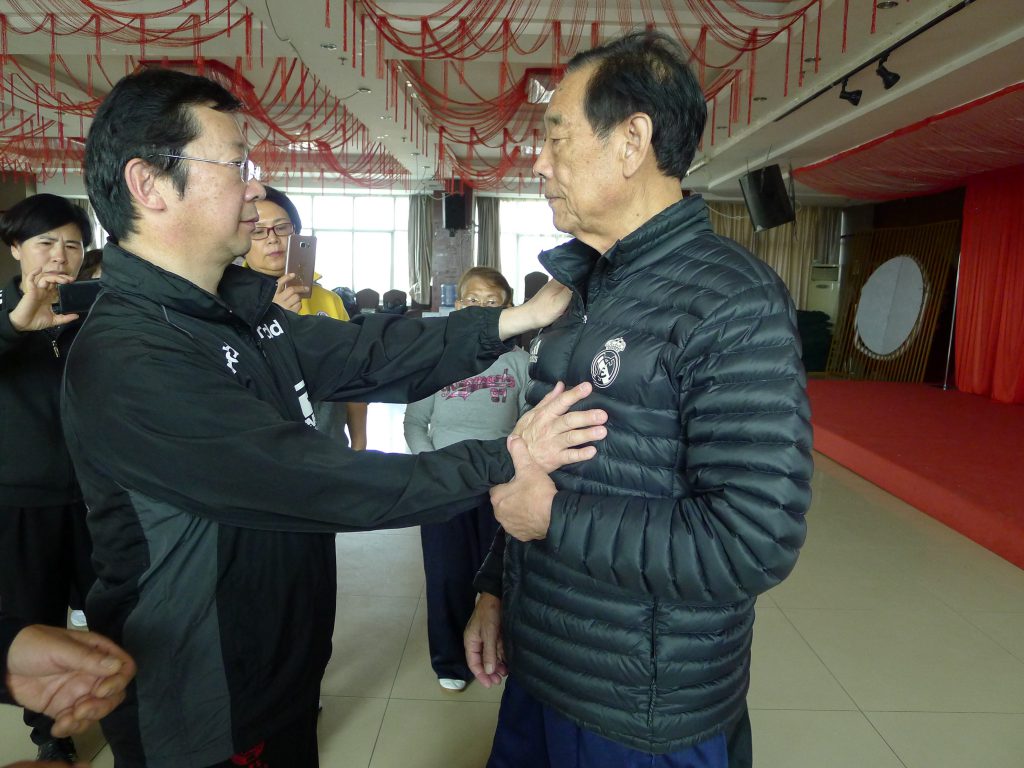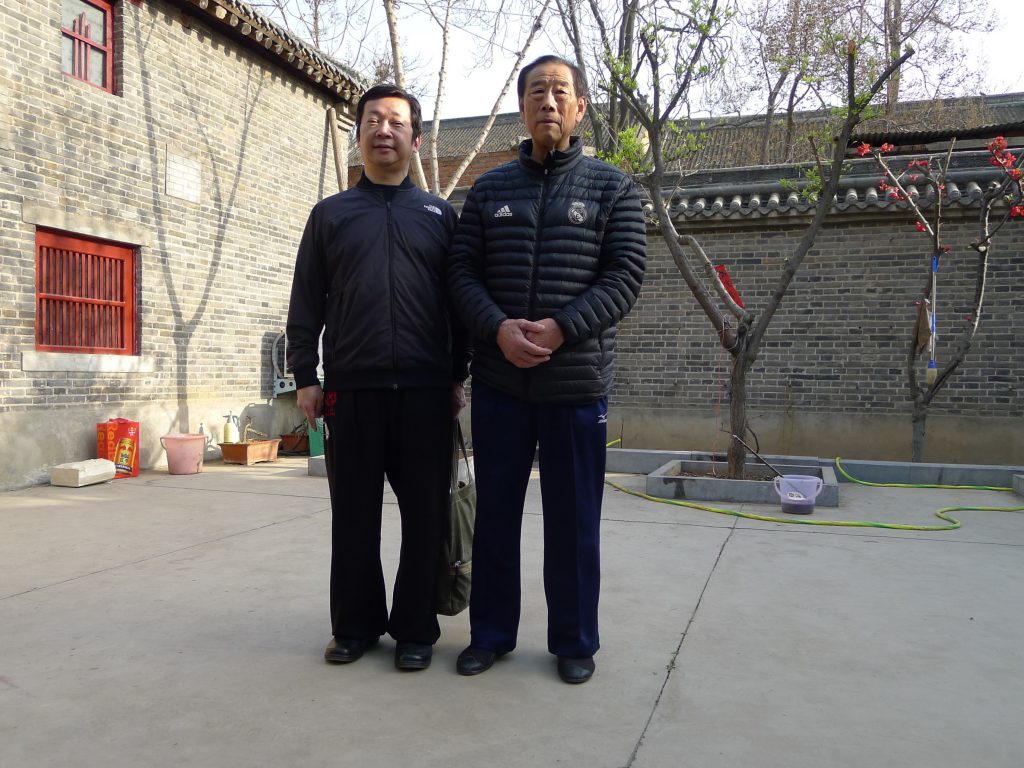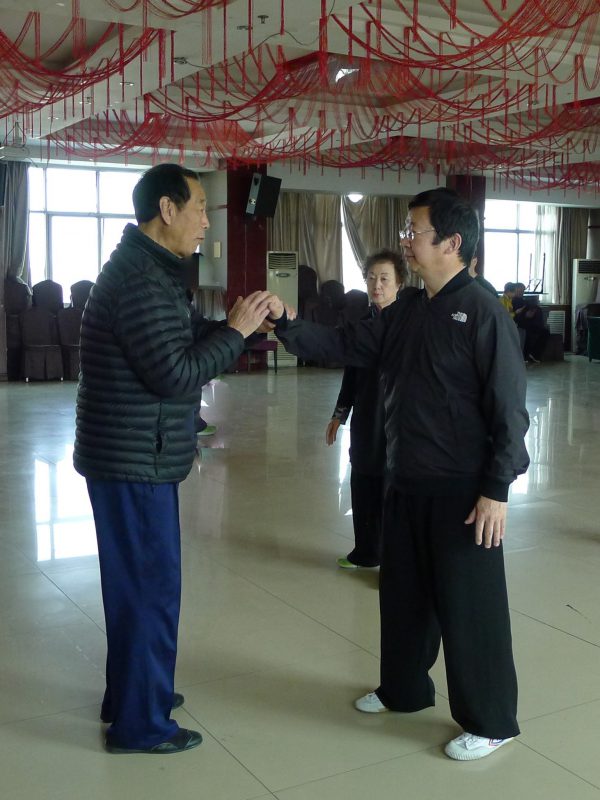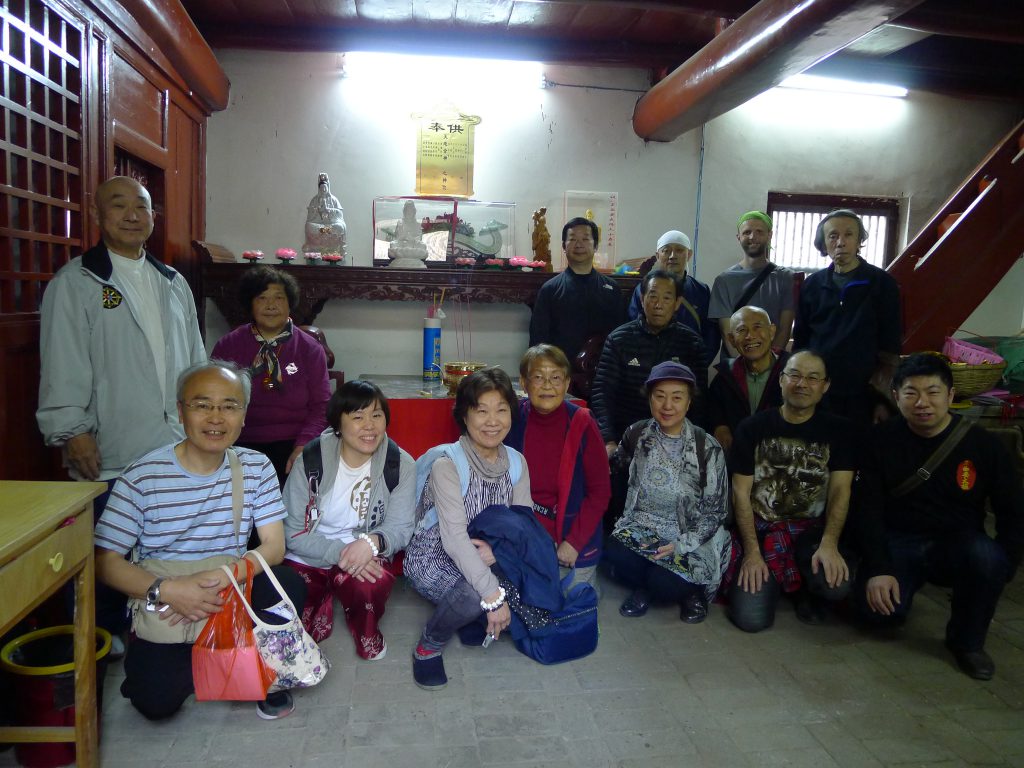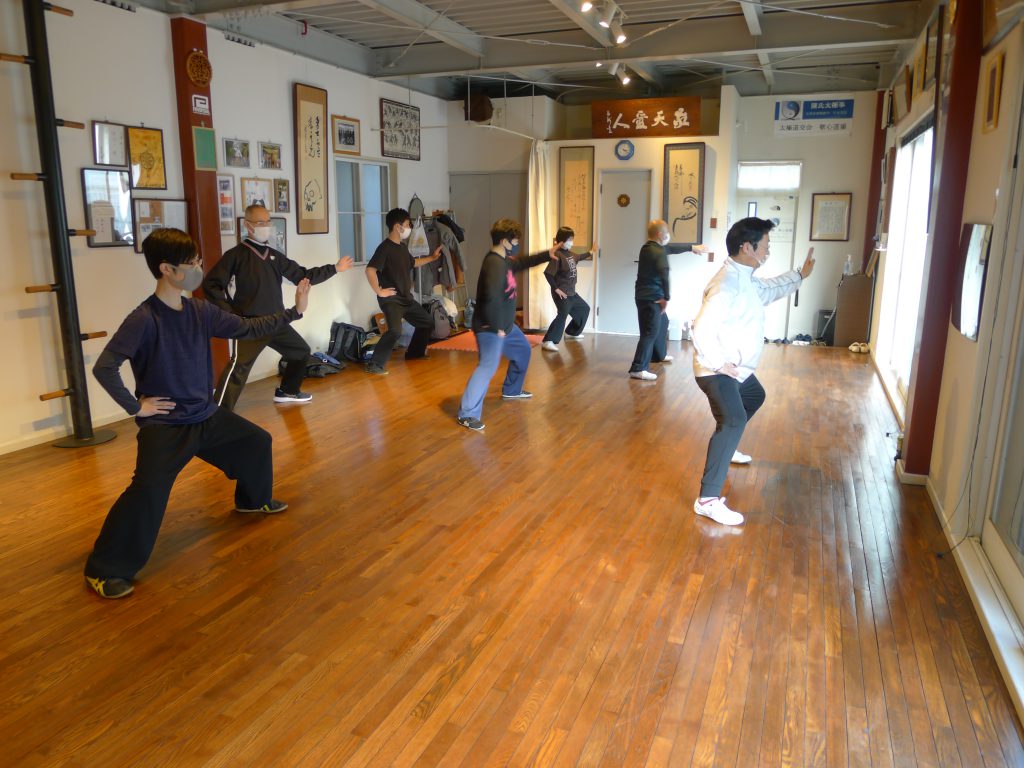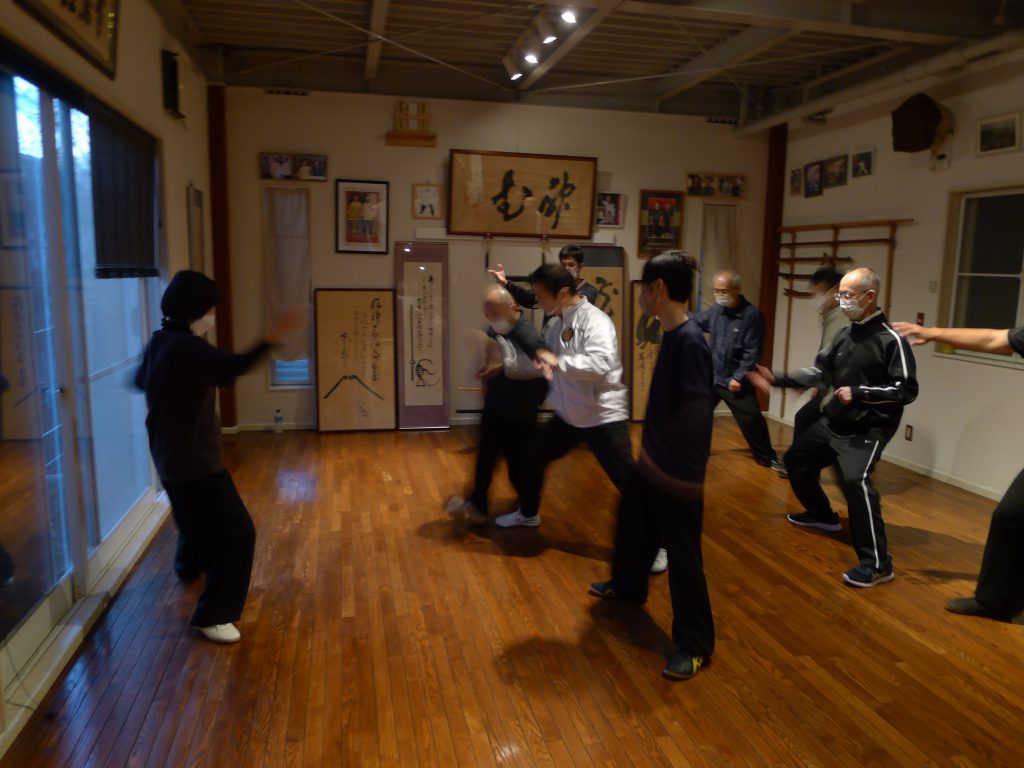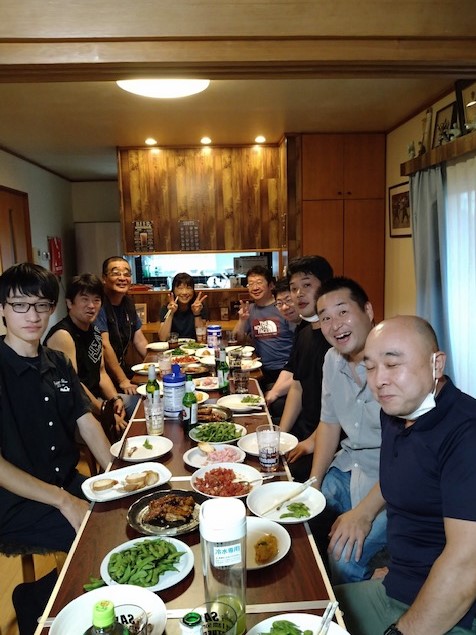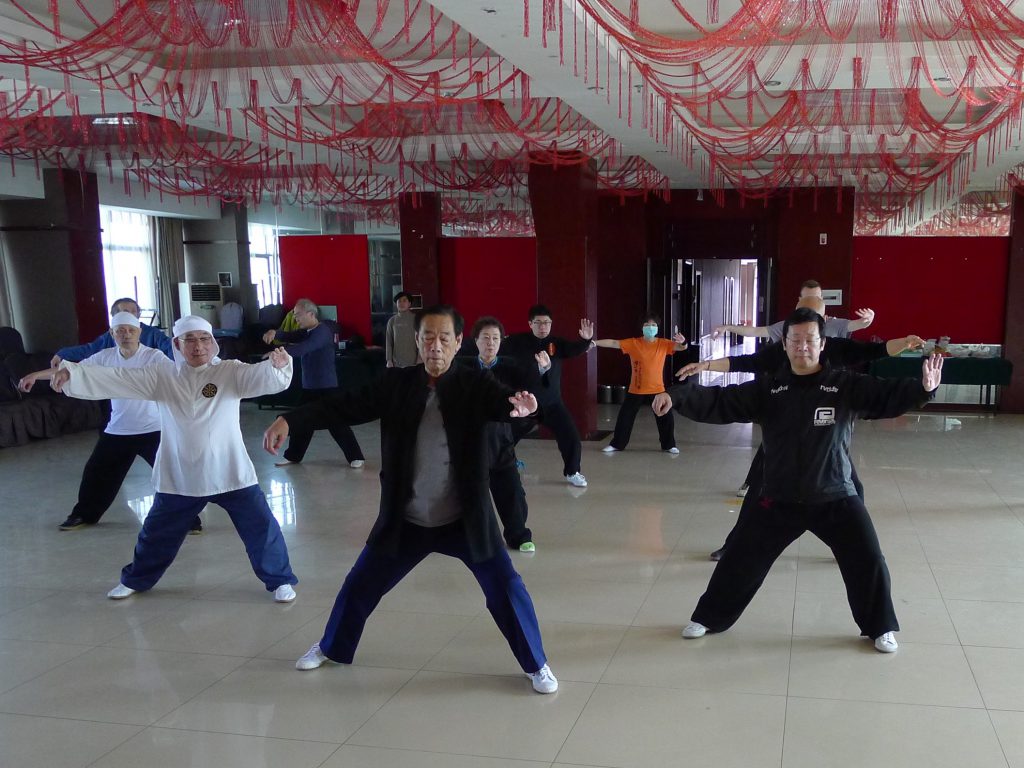太極禅人山口博永
どっちに転んでも大丈夫な世界
This site aims to provide information on Zen and taijiquan master Yamaguchi Hakuei Roshi
-

Interview: Zen, Taijiquan, and the Cultivation of Unconditional Well-Being
Yamaguchi Hakuei (born in Osaka, Japan in 1947) is a rare master in the arts of Zen and taijiquan (tai chi). Taking his vows as a Buddhist monk at age 19, he studied in both Rinzai and Soto traditions, including under Harada Tangen Roshi at Bukkoku-ji Temple. Among the first foreigners to visit and train at Chen Village, the birthplace of taijiquan in China, he became a key representative of Chen Style Taijiquan in Japan. He is currently the abbot of Nonin-ji Temple in Tateyama, Chiba.
The following interview was aired on May 25, 2018 on NHK Radio 2’s Shukyo no Jikan (the interviewer is Hirai Atsushi).
Hirai: I understand that from a very young age, a single question had driven you: Can I ever find peace that remains unaffected by life’s turbulence? Could you explain what this question means to you personally?
Yamaguchi: I was born shortly after World War II. The post-war period was very tough for Japan. I saw wounded soldiers and people living on the streets. The occupying forces took a very arrogant attitude towards Japanese people. Worst of all, there was nothing to eat. When I was in elementary school, the first thing I would do after coming home was check the rice tub to see if any rice had been cooked. If there was rice, I could play happily; if not, I would worry about what we would eat that night.
During this time of post-war turmoil, I began to wonder whether I could ever find peace that’s unaffected by life’s turbulence. Our world operates on conditions. If you have money, you’re okay; if not, you have a problem. As I grew older, I started to search for a kind of well-being that doesn’t depend on such conditions, where I could be content no matter the circumstance. I wasn’t sure what that would look like, but I was eager to know, and my desire to know continued to develop.
One night during my early teenage years, I woke up and intuited that there must be a spiritual reality out there that far surpasses our human existence. And so, I decided to take a correspondence course on Christianity. I was a Christian for half a year, seeking to know God. I wasn’t able to find the answer to that question I had since I was little, but my yearnings were becoming clearer as I grew older, and I think it helped carve out a path forward for me.
H: And so, eventually, you became a monk. How did that happen?
Y: I saw an introductory book on Zen at a book store, and for some reason, I had a feeling that it contained the answer to my lingering question. I felt that Zen held the key to how I must live my life. I was about 16 at the time.
H: And this was relevant to your search for peace unaffected by life’s turbulence?
Y: Yes. It turns out that the peace I sought is to be found within oneself. It’s nowhere but here and is untouched by external circumstances. When I encountered the words of Shakyamuni Buddha, “In all that is above, in all that is below, there is only I. This ‘I’ is most precious,” I felt as though my life was set.
H: So then you went to a Zen temple in Nara Prefecture with such intentions.
Y: Yes.
H: How was your experience training there?
Y: Well, at first there was much more time set aside for samu (chores) than zazen. I remember having to perform samu from dawn to dusk. My teacher, Eichi Maruyama, was extremely strict. After I finished sweeping the garden, he would come rushing out and shake the trees so that there would be leaves on the ground again. Then he would say, “You see what’s below, but not what’s above!” and walk away. The same thing would happen when I was wiping the floor. He would point out spots I missed and scold me. But there was a certain logic to all this. “Sweep so that the tip of the broom will wear out flat! Don’t let it become arched!” I was thoroughly disciplined through the performance of these tasks.
H: Did the samu have a purpose?
Y: Yes, it did. My teacher had a saying: “Apply yourself diligently to that which is meritless.” Don’t seek results. Don’t be bothered with success and failure. Simply devote yourself fully to what you are doing.
About a week after entering the temple I went to my teacher and asked him, “What is world peace?” He said, “First, you must learn the sutras.” Then I asked, “How can world peace be achieved?” “Go to your room!” he said, so I did. Then he told me, “The powerless bodhisattva drowns in his attempt to save others. That’s why you need to become stronger.” He taught me that becoming stronger means learning to immerse yourself in each moment and be fully present here and now. This can be achieved through practice. It was a lesson about devoting your whole body and mind to the situation at hand.
H: Did you train there for some time?
Y: Yes, I was there for three years. During that time, a person who would later become my zazen teacher, Ota Tosui, came to the temple as a travelling monk. He had spent 30 years in a mountain just practicing zazen and I greatly admired him for that. After hearing him speak at length, his final words to me were, “Your eyes glow when you are listening to the Dharma. O sincere soul, if you are to become a true monk, venture into the world!”
H: He said that to you?
Y: Yes.
H: He said that your eyes were glowing?
Y: Yes. He saw me as one with an earnest resolve to follow the path, and he told me to go into the world if I was to become a true monk. At that time, I was living as a monk in a temple, so I took his words to mean that I should focus on developing myself beyond just temple life. Eventually, I left the temple in Nara and dedicated myself to zazen.
H: You were dedicated to the way of Zen, but in your mid-20s, instead of limiting yourself to Zen, you began practicing taijiquan as well.
Y: Yes.
H: How did that happen?
Y: When I was eight, I saw a newsreel about China at a movie theater called Sakurai Gekijo. That’s where I first witnessed taijiquan. I watched as an old man came out of a room and walked slowly along a ridge between rice fields. Once he reached an open area, his spine suddenly straightened. As he began to move slowly and gracefully, I was deeply moved. It left a lasting impression on me. It made me want to join in.
H: But at the time you didn’t know anything about taijiquan.
Y: I had never even heard the word “taijiquan.” But much like how I would later be drawn to zazen, I caught a glimpse of something powerful—a steadfastness that humans can embody, and its dignity and majesty.
H: And that resonated with you at eight years old?
Y: Yes. It would be almost 20 years before I would come into contact with taijiquan again. While I was a monk under Harada Tangen Roshi at Bukkoku-ji Temple in Fukui Prefecture, I met a Canadian man there who had come to practice zazen. This person had developed his taijiquan practice to a considerable depth while back in Canada. I really wanted to practice with him, and I ended up doing so for about two years. These were happy days for me since I was so eager to practice.
Yamaguchi Hakuei performing Yang Style Taijiquan at age 28.
H: What was your impression of taijiquan after actually practicing it?
Y: Well, it didn’t conflict at all with zazen. The slow movements are performed with deep breathing. Zazen is also practiced with deep breathing and focused concentration. Both practices are about fully committing to the present moment, so there was nothing unnatural about it. It only gave me a greater desire to develop my practice further.
H: I believe you were 28 when you first travelled to Taiwan to delve deeper into taijiquan.
Y: That’s correct. I actually wanted to go to mainland China, but the country hadn’t opened up to foreigners yet, so I went to Taiwan first. I travelled back and forth for about five years. Then, I heard that mainland China had started to open its borders, so I decided that I would travel to the continent. I must have been 32 or 33 when I first went. I continued to go every year for nearly 30 years.
Since I wanted to learn taijiquan in its place of origin, I went to Chen Village, where the art has been passed down through generations. It’s about a three-hour drive from Zhengzhou in Henan Province. My first teachers were 19th generation masters Chen Xiaowang and Wang Xian. In Japan, this might be something like learning swordsmanship from Yagyu Jube from Yagyu Village. Both of these masters were exceptional, and it was a great privilege to be able to study under them.
Later, there was a gap when both of these masters were travelling abroad to places like Australia. During that time, I sought out a taijiquan master in Beijing whom I had previously heard about. He was Feng Zhiqiang, an 18th generation master, and he was in fact a teacher of both Chen Xiaowang and Wang Xian. He had developed his form of taijiquan through seven phases of evolution. His evolved form of taijiquan seemed to me to have a deeply Zen-like quality. It demonstrated a progression from technique to principle, or from surface strength to inner strength. I felt that this is the taijiquan that I must finally pursue, so I made trips to visit him over a span of about ten years.

Yamaguchi Hakuei with Chen Xiaowang, 1981.
H: So, what exactly is taijiquan? How do you move your body and what is being performed? I’m sure it’s not easy to describe in words.
Y: We can start by examining the meaning of taiji in taijiquan. Say we have a negative pole and a positive pole, just like a battery. The negative we call “yin” and the positive we call “yang.” If we use the mathematical formula –5+5=0, taiji is the point at which we arrive at zero.
H: So it’s –5 and +5?
Y: It could be 5 or 100 or 1,000, it doesn’t matter. When we practice taijiquan we start from an unbalanced state of –1 and +9. Then we move to –2 and +8, then –3 and +7, –4 and +6, until finally arriving at –5 and +5. This represents completion, the balance of forces. When the right hand goes up, the left hand goes down. When the right hand moves to the right, the left hand moves to the left. The practitioner’s movement is complete when the two opposing forces balance out at –5 and +5.
What normally happens is that when we focus on our right side, it takes up all of our attention, and we lose awareness of our left side. We tend to be unbalanced like this when we first begin practicing.
At the point of zero, where the two forces unite, yin and yang disappear. And yet, it’s precisely yin and yang that give rise to the unity of zero. In Buddhism, we say that “form is emptiness and emptiness is form.” Form is the physical phenomena of –5 and +5. Emptiness is the unity of 0. So this understanding is in line with the Buddhist teaching of form and emptiness.
In practicing taijiquan one must train through the five stages I mentioned. The primary force for movement in taijiquan comes from gravity. From this downward force, an upward rising force is generated. In the case of jumping, you sink down first before the body rises.
H: Universal gravitation is constantly acting on our bodies.
Y: Exactly.
H: So the muscles are used as well when using the force of gravity?
Y: The idea is to eliminate most muscular force. It’s not that muscles aren’t used. The act of standing itself requires muscles. The thing is to not rely on muscular force.
H: You’re moving your body using gravitational force?
Y: Yes. There are these two terms: acquired qi and primordial qi. When you move using the force of your muscles, which are developed after birth, that’s called using acquired qi. When you move using gravity, that’s called using primordial qi. Primordial qi is the qi that’s there before birth. A practitioner can only begin to use primordial qi around the third stage of training. It’s not yet possible in the first and second stages. In the first stage, one must learn the forms. Each posture in taijiquan has a name. In the beginning, we learn routines like 83-form or 74-form containing movements such as “Buddha’s Warrior Attendant Pounds Mortar,” “Lazily Tying Coat,” “Single Whip,” and “White Crane Spreads Wings.”
H: Many movements with names.
Y: Yes. And it’s possible to pause in postures. Once you become sufficiently proficient with the postures, you start to focus more on flowing movement. This is the process of transitioning from form to qi. It requires that you’re able to move using gravity.
H: So instead of moving forcefully with your muscles, you move in accordance with nature.
Y: Yes. Both zazen and taijiquan share the three same elements for training the human organism: body, breath, and mind. You center the body, regulate the breath, and calm the mind. However, there is one important point. These three elements must ultimately be unified. This is done through diligent practice. When the three become one, there is no longer name or form. That is to say, all that remains is flow—a flow in which body and mind are brought into sync through deep breathing. The mind decides what to do. It directs the flow to the upper right, the lower left, front, back, and in all directions as it wills. These are the movement in taijiquan. When a practitioner reaches the third stage (of the five stages which I mentioned earlier), it becomes possible to proceed from form to formlessness.
From formlessness, one moves on to xinji, which is a term that can be understood as the “vital secret of mind.” It reminds me of the words of Einstein. He said that there’s a deeply hidden secret behind material reality, and that truth is beautiful in its simplicity. When you start with the body and proceed into the realm of the mind, the vital secret is experienced as a state of unity, which in Zen is called “non-discriminating knowledge.” It’s knowledge beyond conceptualization.
H: So it’s possible to enter such states in taijiquan? Investigating the movements of the body leads you to mind?
Y: That’s right. It leads to mind. Thich Nhat Hanh described this same process very simply. He said in practicing concentration you begin as an observer. But eventually you learn to be a participant. This is the process of mindfulness he taught.
H: He often spoke about mindfulness. It goes back all the way to the Buddha.
Y: Yes. There’s observation and there’s participation. The Zen master Dogen referred to participation using the term sankyu. In the Zen practice of concentration, you begin by practicing wholeheartedly, but in the early stages, you remain an observer. As your practice deepens and you become truly absorbed in it—to the point that you forget you are even practicing—you become a participant. At this stage of “forgetting,” insight can arise. This is what it means to enter the vital secret of mind. These insights do not rely on a discriminating type of understanding. There is simply knowing, free from discriminating thought.
H: What they’re saying in Zen…
Y: Yes, it’s the same as “entering the vital secret of mind” in taijiquan. I came to this understanding through the teachings of my last taijiquan teacher, Feng Zhiqiang, who taught that heaven, earth, and man must come together as one. Once I understood what this meant, I realized the same thing was happening in zazen. This was a major realization for me. When heaven and earth are connected in the body, the mind ceases to discriminate. In a discriminating frame of mind, up is not down, and down is not up. However, when up and down become linked by a single pillar, the two can no longer be separated. In this position, no separation is possible.
As for the mind, it enters a state of knowing without discrimination. I reexamined zazen and found that it’s the same. The mechanics are qi chen dantian—sinking the qi down to the dantian, or abdomen. The belly becomes full as you exhale, and the back of your neck straightens naturally.
H: What you’re describing isn’t a theoretical concept, but something you’ve felt in your body. So let me ask you again. How does the body move in taijiquan, and what exactly are the results?
Y: In taijiquan, there’s a principle of returning to the state of taiji at the end of each movement. So in a 74-form routine, you would enter that state 74 times. What happens is that you exhale and relax, allowing the qi sink to the dandian, which is at the center of the body. Sinking the qi means you let your shoulders, elbows, and chest drop with the pull of gravity. When this happens, the neck naturally straightens. The technical terms for this are qi chen dantian (sink qi to dantian) and xu ling ding jin (straighten neck and suspend head). The sinking qi of qi chen dantian and the rising qi of xu ling ding jin come into alignment, piercing through heaven and earth.

H: Do these moments arise during the performance of taijiquan movements?
Y: Yes, they do. I used to think that taijiquan was a means and that the goal was satori, enlightenment. But that wasn’t the case. This state of being emerges in the midst of practice itself. Dogen taught that “practice and attainment are one.” It’s during the discipline of practice that satori arises. Therefore, taijiquan is not a means, nor is zazen. Cause and effect are one.
H: It arises in the movements…
Y: It’s a state that arises. This state of consciousness is what is meant by the union of heaven, earth, and man.
H: It arises during taijiquan…
Y: Sinking qi and rising qi.
H: Does the same thing happen when you’re sitting in zazen?
Y: The mechanics are the same. I was taught this through taijiquan.
H: Ever since you were young, you’ve been drawn to discover peace that remains unaffected by life’s turbulence.
Y: And this is the answer I found. Regardless of which way things fall, the inner sanctuary of unconditional well-being remains unaffected. Whether it’s heaven or earth, front or back, right or left. It all became connected. In truth, there is no “falling.” In this sanctuary, there can be no falling because everything has become connected. Then, through the power of knowing, spiritual ecstasy arises. The person who knows that everything will be okay, regardless of life’s circumstances, can smile with serenity. The heart experiences joy, well-being, freedom, and peace, the very things all people seek. It has nothing to do with the outside world.
H: It’s something far from reach for somebody like me who hasn’t trained seriously. But I feel as though I’ve glimpsed a small part of the truth.
Y: That’s what I was seeking when I first became a monk. The first thing is to understand that it’s within you. Then, when heaven and earth are joined, the distinction between self and all else starts to disappear. The simple fact of existence is experienced as profoundly moving. And so, I feel it is my mission to pass on taijiquan as “moving Zen” to the world.
Yamaguchi Hakuei performs Chen Style Hunyuan Taijiquan 24 Form in memory of the late grandmaster Feng Zhiqiang.




